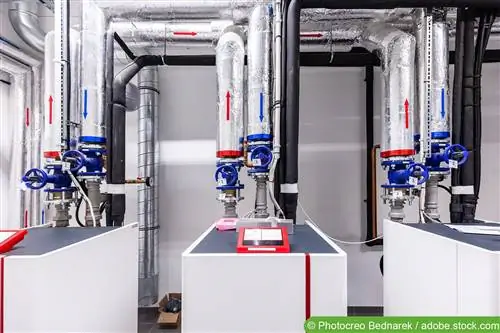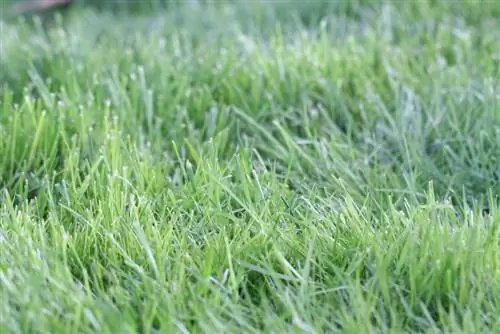- Author admin [email protected].
- Public 2023-12-17 03:39.
- Last modified 2025-01-24 12:45.
Does it make sense to combine a heat pump with a photovoltaic system? Home builders are right to ask themselves this question, because if you rely on a sustainable heating system, it can only be right to produce some of the electricity required for operation yourself, right?
Depending on the initial situation
The short answer is: Yes, of course it makes sense. And yet many factors need to be taken into account that influence the detailed answer:
- How much living space do I have?
- How many people live in the household (hot water requirement)?
- How much roof space is available?
- What roof pitch/orientation is available?
- Decision: “investment” vs. “higher running costs”
A specialist company can offer reliable advice and calculations for your situation.
Do you want to retrofit a heat pump in an old building? This requires further questions:
- Is there underfloor heating?
- Does the house have good thermal insulation?
- Is there enough space in the house/on the property?
Case study: Brine-water heat pumps in combination with PV
2x brine-water heat pumps (WP) were installed, each with 6 kW output with a power consumption of approx. 1.2 kW + 1.6 m³ buffer storage. The small heat pumps have a lower power consumption, so that they efficiently consume their own electricity even with low PV yield. The PV system is divided into two roof surfaces with a 25° inclination and achieves approx. 16 kWp. The system is to be supplemented with a 12 kWh electricity storage system in order to achieve an even higher level of self-consumption and self-sufficiency.
Is 16 kWp oversized?
Yes and no. The higher the power in kWp, the:
- lower percentage of self-consumption in summer (=you produce more expensive electricity than you feed it in)
- Higher coverage of personal needs in winter
Situation: Home, family of 4 people
Hot water generation via hot water heat pump, without electricity storage
In the current year, a self-sufficiency level of 71% has been achieved since it went into operation in June. A total of 16% of the electricity was self-consumed, with this value already rising to 45% in October (degree of self-sufficiency 70%) and to over 70% in November (degree of self-sufficiency 60%).
When the PV system produces electricity, the consumers switch on as soon as set limit values are reached. These are deliberately set low for winter operation so that the use of your own electricity is maximized and the purchase of mains electricity is reduced.
Gamechanger Buffer
If the sun is shining, the heat pump can heat up the buffer storage. Although the efficiency decreases as the number of degrees in the buffer storage increases, this helps - depending on the ratio to the living space - to bridge the next night or the next day completely without mains power for the heating. Even in the season when the sun doesn't appear as often, a buffer storage is important so that you don't have to use external electricity to operate the heat pump. Adding a PV system only makes sense with a correctly sized buffer storage tank.
When which consumers will be activated:
- from 400 watts of PV output: hot water heat pump with 0.5 kW
- from 1,000 watts of PV output: WP Master 1.2 kW (=1.7 kW consumption=0.7 kW grid supply)
- from 1,900 watts PV output: WP slave 1.2 kW (=2.9 kW consumption=1.0 kW grid supply)
Result
The need for hot water and heating energy can so far be completely covered by PV on approx.80% of all days. Only on overcast days in winter and when there is snow will the PV not produce enough electricity to operate the heat pumps for a sufficient period of time.

Approximately 500 kWh of yield is expected in December. Of course, these are not enough to cover hot water and heating energy, but they do help reduce the costs of hot water production and heating. The heat pumps in the example are given with a COP value (see info box) of 4.81.
Coefficient of performance COP (EN14511)
The COP indicates the value of the heat output in relation to the electrical power used under certain conditions. The higher the COP value, the more efficiently the heat pump works. A COP value of 4 means that 1 kWh of electricity is converted into 4 kWh of thermal energy.
Assuming that 400 kWh of the expected 500 kWh are used with a COP value of 4.5, at least1,800 kWh of thermal energy can be generated.
Conclusion
The observation period is too short to be able to draw a well-founded conclusion, because the dark heating period is pending.
Nevertheless:
Investing in a photovoltaic system makes more sense,the higher your own consumptionis. Another advantage: A heat pump createsindependence from fossil fuelsand the PV system helps to reduce thedependence on grid electricityIn addition to a power storage system, the system is significantly improved. Of course, at the beginning there areinvestments, which have a significant impact on financing, especially when building a house, but the result“lower running costs” is worth it to many. This means the high investment costs are amortized again.




